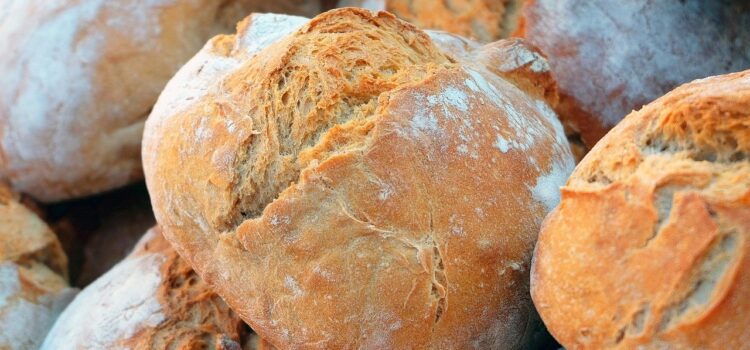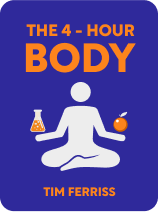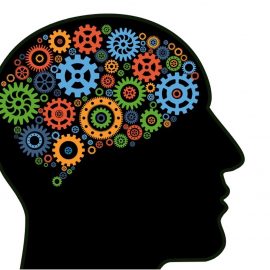

This article is an excerpt from the Shortform book guide to "The 4-Hour Body" by Timothy Ferriss. Shortform has the world's best summaries and analyses of books you should be reading.
Like this article? Sign up for a free trial here .
What is the Tim Ferriss Slow Carb Diet? How can the Tim Ferriss Slow Carb Diet help you reach your body goals?
The Tim Ferriss Slow Carb Diet is the meal plan in The 4-Hour Body. It requires you to limit most carbs six days a week and eat more protein.
Read more about the Tim Ferriss Slow Carb Diet and how to implement it in your life.
The Tim Ferriss Slow Carb Diet
Now that we’ve learned how to stick to a diet, it’s time to look at some specific diet options. Popular diets work to some extent, but they’re not going to be enough to totally transform your body. The Tim Ferriss Slow Carb Diet, on the other hand, was developed by the author through self-experimentation and works for almost everyone who follows it properly. On this diet, the author lost 20 pounds of fat (which corresponds to two clothing sizes) within a month.
(The Tim Ferriss Slow Carb Diet involves eating a lot of protein, which you might be skeptical of if you have existing gout or kidney problems, but the author says there is no good scientific evidence to support the claim that protein is bad for your kidneys.)
How to Follow the Tim Ferriss Slow Carb Diet
Rule #1: Stop eating white-colored carbohydrates, or any carbohydrates that come in white-colored varieties (rice comes in white, brown, pink, black—don’t eat any rice). Avoiding white-colored food will also help you avoid diabetes-causing chemicals created by bleaching flour.
- For example, don’t eat pasta, tortillas, potatoes, bread, cereal, and breading on fried food. Cauliflower is allowed.
Rule #2: Repeat the same 3-4 meals regularly. This allows you to avoid foods that will make you gain fat and ensure you get enough protein (at least 20 grams per meal). Each meal should contain one item from each of the following categories:
- Protein: eggs (especially whites), beef, fish, pork, chicken thigh or breast
- Legumes: lentils, soybeans, pinto beans, red beans, black beans
- Vegetables: any vegetables you like. The author recommends sticking to green beans, peas, broccoli, asparagus, spinach, kimchi, and sauerkraut because including more takes too much work between shopping and prep time.
Rule #3: Eat two to three times what you used to. You’re probably used to small portion sizes if you’ve been eating things like pasta, which isn’t very physically large but contains a lot of calories. Slow-carb foods don’t have as many calories by volume, so you need to eat a larger quantity. However, don’t overeat nuts or chickpeas—you’ll gain fat.
Rule #4: Eat at prescribed times:
- Eat breakfast within an hour, ideally within half an hour, of waking up. Never skip breakfast—if you have little appetite in the mornings, eat only a small amount of high-protein breakfast, such as 2-3 eggs.
- Eat four meals a day, four hours apart.
Rule #5: Drink beverages according to the following rules:
- Drink lots of water. Your liver, which is largely responsible for fat loss, needs a lot of water to function properly.
- Drink as many low- or no-calorie drinks as you like, for example, unsweetened tea.
- Don’t drink juice, milk, or soda.
- Drink fewer than 16 ounces of diet soda per day. (Even though sweeteners don’t have calories, they increase insulin release. “All-natural” sweeteners are especially bad for you.)
- Optional: Drink up to two glasses of low-sugar red wine per day.
Rule #6: Avoid fruit, except for tomatoes and avocados in moderation. Fruit contains the sugar fructose, which will make you gain fat. Fructose can also increase the uptake of trace elements such as iron, and iron can be toxic in large quantities.
Rule #7: Don’t eat dairy, except for cottage cheese. Even though dairy products have a low glycemic index, they produce a large insulin release, which will make your body store fat.
Cheat Day
Follow the Slow-Carb Diet rules only six days per week. The seventh day is a built-in cheat day—eat and drink whatever you want, all the no-nos included.
Though it sounds counterintuitive, cheat day provides many benefits:
- If you make yourself a little sick by overeating junk food, you won’t crave it so strongly on other days.
- Eating a lot once a week maintains your metabolism (which slows when you restrict calories). Your metabolism is what makes you lose weight, so it’s important to keep it going strong.
- Everyone cheats on diets. Building in a cheat day dispenses with guilt and keeps you mentally healthy.
- Eating varying amounts helps prevent your body from decreasing hormone production.
You won’t gain any permanent weight from cheat day as long as you adjust your body chemistry so that what you eat either passes through you or is absorbed into muscle tissue (rather than fat tissue). To do this:
1. Keep your blood sugar levels consistent so your body won’t release as much insulin. To manipulate blood sugar levels:
- Use the techniques in the “Understanding Insulin” section. Particularly, drink a little bit of citric juice (the author recommends grapefruit) before your first cheat meal. The fructose in grapefruit juice will flat-line your blood sugar.
- Eat a regular, non-binge breakfast of 300-500 calories. It should contain 30 grams of protein minimum, which will decrease your appetite for the rest of the day so you don’t go overboard. It should also contain fiber to avoid diarrhea.
- Use supplements that control the release of insulin.
2. Increase the speed of food passing through you by eating or drinking 100-200 milligrams of caffeine at each meal. If food passes through your body fast enough, there isn’t time for your body to absorb all of it.
3. Encourage the storage of calories in muscles instead of fat. The glucose transporter type 4 (GLUT-4) is a “gate” on both muscles and fat that allows calories to enter. You can stimulate GLUT-4 on the surface of muscles by doing 60-90 seconds of muscular contractions just before you eat and then again 90 minutes after eating. Try squats, push-ups against the wall, or chest flys with a resistance band.
It’s normal to gain weight immediately after cheat day and that’s not a problem—you’ll lose the weight again over the next two days. Remember that circumference measurements are a better measure of fat loss than weight.
Men can often replace cheat day with a single cheat meal. Some women can’t because the diet decreases leptin (a hormone that regulates fat storage), and low leptin levels can inhibit menstruation.
Troubleshooting
Following any diet is challenging. Here are some of the common problems people encounter with the Slow-Carb Diet and how to fix them:
Problem #1: You feel the diet is too strict. If you think the diet is too hard to commit to upfront, try:
- Committing to only a one-week test.
- Starting by only changing breakfast. Once you see results, you’ll be more motivated to fully commit.
- Planning to eat forbidden foods on cheat day.
- Trying sugar-free Jell-O in dark moments.
Problem #2: You don’t like some of the diet’s specific requirements. You can tweak the diet as follows:
- If you want to flavor your coffee, use less than two tablespoons of cream instead of milk.
- If you want the meals to have more flavor, use spices, herbs, and sauces (but not cream-based sauces). The author recommends salsa, Montreal steak rub, or macadamia oil, to name a few.
- If you have dietary restrictions, adjust. For example, if you’re vegetarian, don’t eat the meat and eat more legumes instead.
- If you don’t like beans, you can eat other legumes instead, or manipulate the beans to mitigate some of their unpopular effects:
- To avoid getting gassy after eating beans, soak them in water before cooking them, buy canned beans, or add Beano or epazote to the beans. These methods break down the carbohydrate that causes flatulence.
- To make beans taste less bland, add seasonings such as hot sauce, garlic powder, or balsamic vinegar.
- To improve the texture, make the beans into “mashed potatoes” by cooking the beans in olive oil, adding some water, and seasoning like mashed potatoes.
Problem #3: You think repeating meals is boring. Remember that the results are worth a little boredom. Also, reflect on how you used to eat—probably, you often repeated meals anyway. Most people eat the same few breakfasts.
Problem #4: You have concerns about cooked vs. raw food. While there have been studies that show raw food is healthier than cooked food, the most-oft cited study was conducted on cats, who have two important biological distinctions from humans: 1) humans are omnivores and cats are carnivores, and 2) cats become unhealthy when they eat cooked food because heat deactivates taurine, an amino acid that helps digestion. Humans, on the other hand, can produce their own taurine so it’s not dangerous to eat cooked food. It’s fine to eat cooked kidney beans, carrots, and kale, among many other things.
Problem #5: You’re not getting enough electrolytes. (Symptoms of this include feeling weak or experiencing spasms.) As you lose excess water on the diet, you lose electrolytes—such as calcium, magnesium, and potassium—as well. Calcium and magnesium are easiest to take as pills, though you can get them from food if you prefer. A high source of calcium is salmon with bones, and there’s a lot of magnesium in pumpkin seeds. You can get potassium from potassium-enriched salt, avocados, or pills.
Problem #6: You get hungry (or hunger creates low-blood sugar symptoms such as headaches). If you’re hungry, eat more legumes and protein at each meal. If you’re really hungry, eat an extra meal. If hunger keeps you up at night, have some protein before bed, such as a tablespoon of almond butter.
Problem #7: You want snacks. Since you should never be hungry on the diet, you likely want snacks for a psychological reason such as using them to procrastinate. If you have to snack, eat carrots.
Problem #8: You like eating out, or you’re traveling and have less control over what you eat. When you eat out, choose Mexican or Thai cuisine, which typically have a lot of the characteristics of the slow-food diet and are inexpensive. At any restaurant, ask for substitutions to get the food closer to your ideal meal (for example, sub in a salad for rice). If you don’t have a lot of options, eat walnuts or almonds. Likewise, you can find a chicken salad almost anywhere.
Problem #9: Menstruation (if applicable) is affecting your weight. Ignore your weight in the 10 days before you menstruate because you retain water during this time, which will skew the numbers. Start paying attention to weight again the day after your period ends.
Problem #10: You hit a plateau. Over time, your pace of fat loss will slow. Once this happens, you can introduce exercise. We’ll look more at exercise in Chapter 6.

———End of Preview———
Like what you just read? Read the rest of the world's best book summary and analysis of Timothy Ferriss's "The 4-Hour Body" at Shortform .
Here's what you'll find in our full The 4-Hour Body summary :
- How to do the least amount you need to do for the results you want
- Why you need a cheat day in your diet
- How to improve everything about your body, including sleep, sex, and longevity






